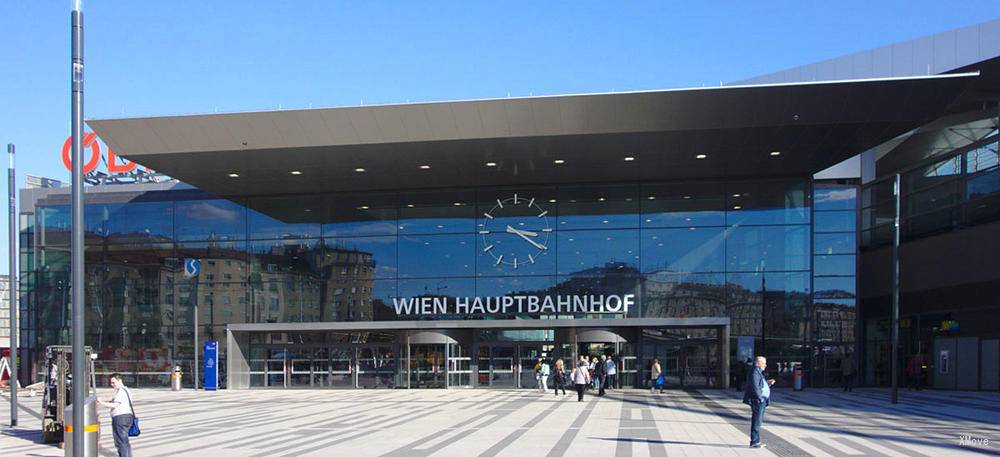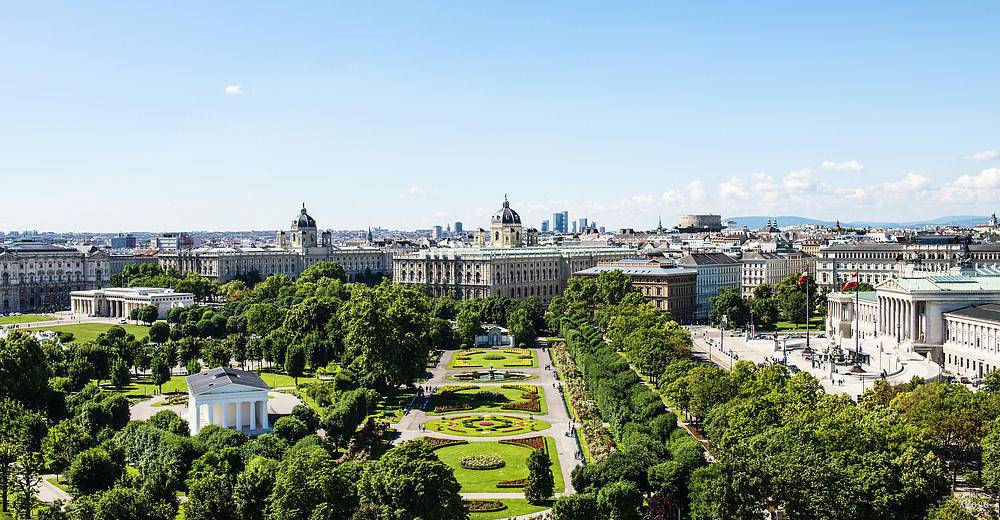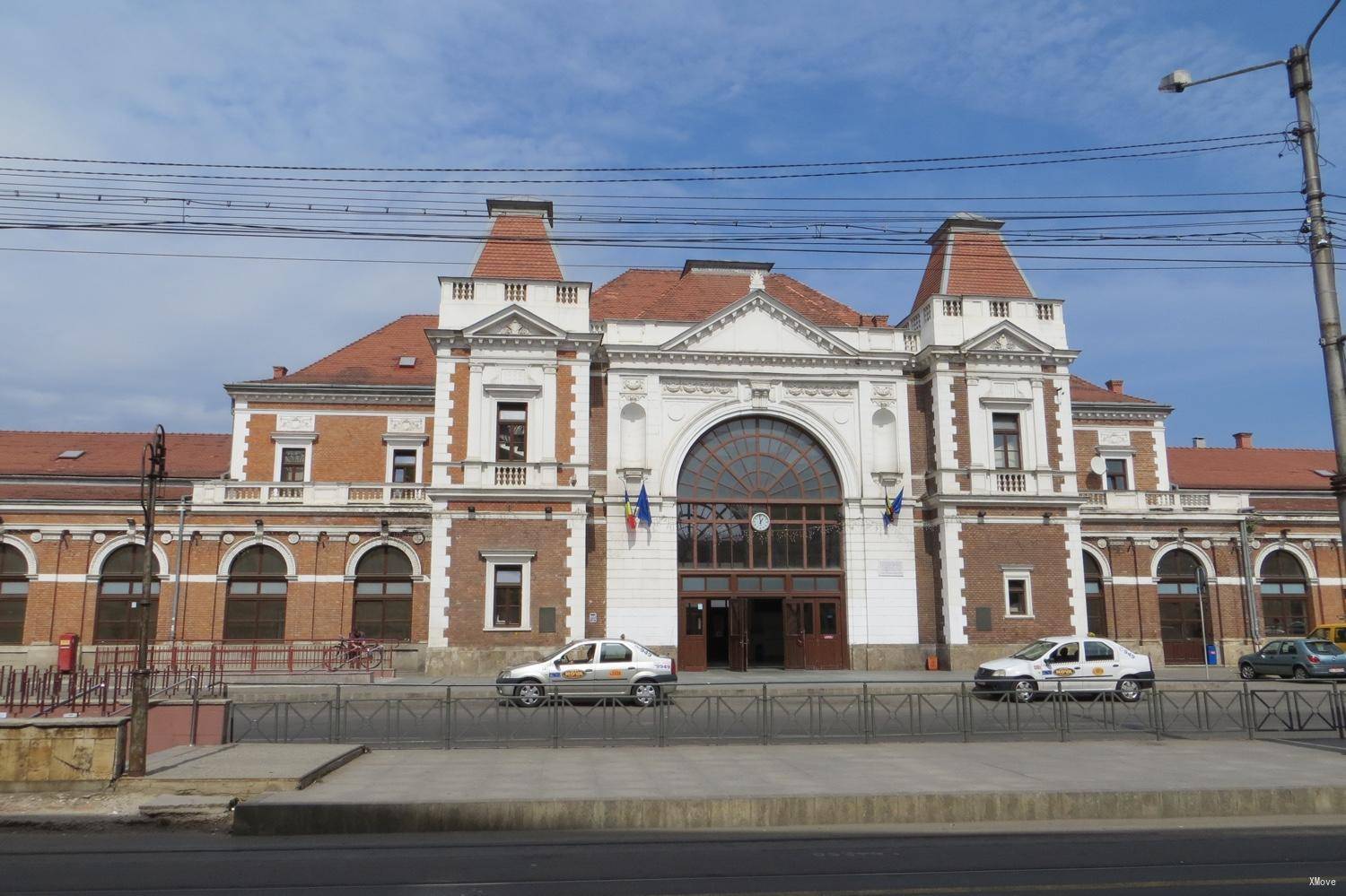Vienna Central Station to Cluj Napoca: Trains, Buses, Fares, Today's Connections, Routes, Duration, Types of Trains, Station Guides, Tips, Journey
Austria Train Tickets
Scan QR code, download App to see Vienna Central Station's more live update, station guide, plan and photos



Train schedule Vienna Central Station(Wien Hbf) to Cluj Napoca
Popular train routes departing from Vienna Central Station(Wien Hbf)
* Warszawa Central Station(Warszawa Centralna)
* Krems An Der Donau
* Wiener Neudorf
* Split
* Ljubljana
* Padova
* St. Valentin
* Venice Mestre(Venezia Mestre)
* Zürich Hb
* Verona Porta Nuova
* Florence Santa Maria Novella(Firenze Santa Maria Novella, Smn)
* Muenchen Hbf Gl 5 10(München Hbf Gl.5 10)
* Ljubljana Avtobusna Postaja
* Warszawa Central Station(Warszawa Centralna)
* Ebensee
* Hieflau
* Florence Santa Maria Novella(Firenze Santa Maria Novella, Smn)
* Vienna Westbahnhof (Gerstnerstraße)(Wien Westbahnhof (Gerstnerstraße))
* Bucuresti Nord Gara B (Basarab,Bucharest)
* Vienna Handelskai (Bahnsteige 1 2)(Wien Handelskai (Bahnsteige 1 2))
* Zagreb Glavni Kolodvor(Zagreb Glavni Kolod.)
Popular train routes arriving in Vienna Central Station(Wien Hbf)
* Viena Westbahnhof (Gerstnerstraße)(Wien Westbahnhof (Gerstnerstraße))
* Hallstatt
* Merano Meran
* Belgrado(Beograd)
* Pádua(Padova)
* Estação Santa Maria Novella De Florença, Smn (Principal)(Firenze Santa Maria Novella, Smn)
* Hamburgo(Hamburg Hbf)
Popular train routes departing from Cluj Napoca
Popular train routes arriving in Cluj Napoca

Vienna Central Station
Vienna's largest railway station: the central railway station (Wien Hauptbahnhof). The line is mainly connected to Eastern Europe, Slovakia, Hungary, Poland, Bulgaria and other places as well as Stuttgart, Paris, Venice, Athens and other cities in Western Europe.
Vienna Central Station - Station Guide | Departures and Arrivals | Popular Routes
Vienna ( ; German: Wien [viːn] ) is the national capital, largest city, and one of nine states of Austria. Vienna is Austria's primate city, with a population of about 1.9 million (2.6 million within the metropolitan area, nearly one third of the country's population), and its cultural, economic, and political centre. It is the 7th-largest city by population within city limits in the European Union. Until the beginning of the 20th century, it was the largest German-speaking city in the world, and before the splitting of the Austro-Hungarian Empire in World War I, the city had 2 million inhabitants. Today it is the second largest German-speaking city after Berlin and just before Hamburg. Vienna is host to many major international organizations, including the United Nations, OPEC, and the OSCE. The city is located in the eastern part of Austria and is close to the borders of Czechia, Slovakia, and Hungary. These regions work together in a European Centrope border region. Along with nearby Bratislava, Vienna forms a metropolitan region with 3 million inhabitants. In 2001, the city centre was designated a UNESCO World Heritage Site. In July 2017 it was moved to the list of World Heritage in Danger.Additionally to being labeled the "City of Music" due to its musical legacy, Vienna is also said to be the "City of Dreams", because of it being home to the world's first psychoanalyst Sigmund Freud. Vienna's ancestral roots lie in early Celtic and Roman settlements that transformed into a Medieval and Baroque city. It is well known for having played a pivotal role as a leading European music centre, from the age of Viennese Classicism through the early part of the 20th century. The historic centre of Vienna is rich in architectural ensembles, including Baroque palaces and gardens, and the late-19th-century Ringstraße lined with grand buildings, monuments and parks.Vienna is known for its high quality of life. In a 2005 study of 127 world cities, the Economist Intelligence Unit ranked the city first (in a tie with Vancouver and San Francisco) for the world's most liveable cities. Between 2011 and 2015, Vienna was ranked second, behind Melbourne. In 2018, it replaced Melbourne as the number one spot and continued as the first in 2019. For ten consecutive years (2009–2019), the human-resource-consulting firm Mercer ranked Vienna first in its annual "Quality of Living" survey of hundreds of cities around the world. Monocle's 2015 "Quality of Life Survey" ranked Vienna second on a list of the top 25 cities in the world "to make a base within."The UN-Habitat classified Vienna as the most prosperous city in the world in 2012/2013. The city was ranked 1st globally for its culture of innovation in 2007 and 2008, and sixth globally (out of 256 cities) in the 2014 Innovation Cities Index, which analyzed 162 indicators in covering three areas: culture, infrastructure, and markets. Vienna regularly hosts urban planning conferences and is often used as a case study by urban planners.Between 2005 and 2010, Vienna was the world's number-one destination for international congresses and conventions. It attracts over 6.8 million tourists a year.
Vienna - Guide, Attractions, Tours, Sightseeings | Train from/to Vienna | Popular RoutesCluj-Napoca (Romanian pronunciation: [ˈkluʒ naˈpoka] , German: Klausenburg; Hungarian: Kolozsvár, Hungarian pronunciation: [ˈkoloʒvaːr] ; Medieval Latin: Castrum Clus, Claudiopolis; and Yiddish: קלויזנבורג, Kloiznburg), commonly known as Cluj, is the fourth most populous city in Romania, and the seat of Cluj County in the northwestern part of the country. Geographically, it is roughly equidistant from Bucharest (324 kilometres (201 miles)), Budapest (351 km (218 mi)) and Belgrade (322 km (200 mi)). Located in the Someșul Mic river valley, the city is considered the unofficial capital to the historical province of Transylvania. From 1790 to 1848 and from 1861 to 1867, it was the official capital of the Grand Principality of Transylvania. As of 2011, 324,576 inhabitants lived within the city limits (making it the country's second most populous at the time, after the national capital Bucharest), marking a slight increase from the figure recorded at the 2002 census. The Cluj-Napoca metropolitan area has a population of 411,379 people, while the population of the peri-urban area (Romanian: zona periurbană) exceeds 420,000 residents. The new metropolitan government of Cluj-Napoca became operational in December 2008. According to a 2007 estimate provided by the County Population Register Service, the city hosts a visible population of students and other non-residents—an average of over 20,000 people each year during 2004–2007. The city spreads out from St. Michael's Church in Unirii Square, built in the 14th century and named after the Archangel Michael, the patron saint of Cluj-Napoca. The boundaries of the municipality contain an area of 179.52 square kilometres (69.31 sq mi). Cluj-Napoca experienced a decade of decline during the 1990s, its international reputation suffering from the policies of its mayor at the time, Gheorghe Funar. Today, the city is one of the most important academic, cultural, industrial and business centres in Romania. Among other institutions, it hosts the country's largest university, Babeș-Bolyai University, with its botanical garden; nationally renowned cultural institutions; as well as the largest Romanian-owned commercial bank. Cluj-Napoca held the titles of European Youth Capital in 2015 and European City of Sport in 2018.
Cluj Napoca - Guide, Attractions, Tours, Sightseeings | Train from/to Cluj Napoca | Popular Routes
Austria Train Tickets
Scan QR code, download App to see Vienna Central Station's more live update, station guide, plan and photos



Hot Journeys
* Paris -> Avignon
* Rome(Roma) -> Florence
* Zurich(Zürich) -> Paris
* Munich(Müchen) -> Dusseldorf(Düsseldorf)
* Nice -> Milan
* Rome(Roma) -> Florence
* Interlaken -> Lucerne(Luzern)
* Madrid(Madrid) -> Barcelona
* Paris -> Venice(Venezia)
* Pisa -> Florence
* Barcelona -> Madrid(Madrid)
* Geneva(Genève) -> Paris
* Warsaw(Warszawa) -> Berlin(Berlin)
* London(London) -> Brussels(Bruxelles)
* Venice(Venezia) -> Bologna
* Florence -> Prato(Prato)
* Milan -> Turin(Torino)
* Stuttgart -> Frankfurt Airport(Frankfurt Flughafen)
* Helsinki(Helsinki) -> Rovaniemi(Rovaniemi)
* Seoul(서울) -> Busan(부산)
* Dusseldorf(Düsseldorf) -> Frankfurt
* Bratislava(Bratislava) -> Warsaw(Warszawa)
* Beijing(北京) -> Shanghai(上海)
* Avignon -> Paris
* Kaohsiung(高雄) -> Taipei(台北)
* Warsaw(Warszawa) -> Krakow(Kraków)
* Rome(Roma) -> Venice(Venezia)

